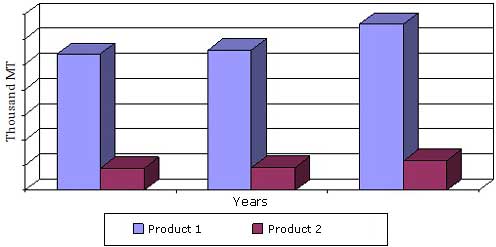April 14, 2015
Wellesley, Mass., April 14, 2015 –BCC Research (www.bccresearch.com) reveals in its new report on elastomers that trends such as weight reduction, strength improvement, noise reduction, cost-performance improvement and recyclable ability will significantly affect the growth in the elastomer market.
The global elastomer market will grow at a moderate compound annual growth rate (CAGR) of 3.7% from 2014 through 2019. Some segments in the industry will take off and enjoy rapid expansion through 2019, whereas others will dwindle in the next few years. The Chinese thermoplastic elastomer market, for instance, will grow at a high CAGR of 8.6%, whereas thermoset elastomers in North America will experience a CAGR as low as 0.8%.
An elastomer is a polymer with viscosity and elasticity along with weak inter-molecular forces. It includes both thermoplastic elastomers (TPEs) and thermoset elastomers (TSEs). TSEs, also known as rubbers, include natural rubber (NR) and synthetic rubber. Synthetic rubbers include synthetic polyisoprene rubber (IR), polybutadiene rubber (BR), styrene-butadiene rubber (SBR), nitrile rubber (NBR), chloroprene rubber (CR), isobutylene isoprene rubber (IIR), ethylene propylene monomer (EPM) and ethylene propylene diene monomer (EPDM). NR, IR, BR, SBR, NBR and CR are unsaturated rubbers. IIR, EPM and EPDM are saturated rubbers. TPEs include thermoplastic styrenic (TPS), thermoplastic polyolefin (TPO), thermoplastic vulcanizate (TPV), thermoplastic polyester elastomer (TPEE) and thermoplastic polyurethanes (TPU). Other TPEs with relatively small volumes of consumption include thermoplastic polyamides (TPA), polyvinyl chloride-based thermoplastic elastomer (TPVC) and melt processable rubber (MPR). TPS, also known as styrene block copolymer (SBC), is the largest product in terms of volume.
Stricter environmental laws and new governmental goals will require elastomer producers to manufacture more recyclable tires and other elastomer products. To address the issue of global climate change, developed countries reached an agreement in 1997 called the Kyoto Protocol, promising to cut their emissions of carbon dioxide by 5.2% by 2012. An agreement was reached to extend the Kyoto Protocol during a plenary session at the United Nations Climate Change Conference (COP17) in Durban on December 11, 2011, and details were discussed further in subsequent international climate change talks.
“The carbon reduction target will force tire manufacturers to reduce carbon dioxide emissions through efforts such as improving energy efficiency and recycling gas emissions. This trend will provide a strong momentum to push elastomers to develop new elastomer products for greenhouse gas reduction,” says BCC Research analyst Jason Chen. “In tire application, the tread rubber, bead filler and inner liner could account for 39%, 13% and 8% of the oil consumption of a tire, respectfully. Elastomer manufacturers are developing new elastomer varieties to help tire producers reduce energy consumption.”
Global tariffs have been raised for global tire trade. The U.S., Argentina, Brazil and Russia have protected their tire industries by increasing the tariffs for imported tires in the last few years. The tariffs will inhibit the growth of tire exports and elastomers consumption in tire manufacturing countries, especially China.
Global tariffs for elastomers also distort the advancement of elastomers. The Chinese government puts a significant deference between taxes on natural rubber and the so-called compounded rubber, which increases the unnecessary production of a large volume of compounded rubber for the sole purpose of reducing import taxes.
Elastomers: Applications and Global Markets reviews, measures and forecasts global markets for elastomers and forecasts trends of production and sales in these markets through 2019.

Editors and reporters who wish to speak with the analyst should contact Steven Cumming at steven.cumming@bccresearch.com.
Elastomers: Applications and Global Markets( CHM056A )
Publish Date: Mar 2015
Data and analysis extracted from this press release must be accompanied by a statement identifying BCC Research LLC as the source and publisher. For media inquiries, email press@bccresearch.com or visit www.bccresearch.com/media to request access to our library of market research.